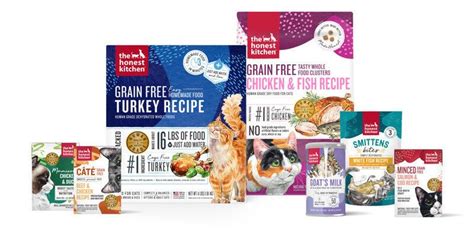With the growing awareness of the importance of pet health, the demand for human-grade pet food has skyrocketed.

In 2022, this market was valued at a whopping $12.9 billion, and it is projected to reach a staggering $32.4 billion by 2025. This trend is being fueled by a number of factors, including:
Rising pet ownership
The number of pet owners in the United States has been steadily increasing over the past few decades. In 2021-2022, 69 million households, or 56.9% of U.S. households, owned a pet. This means that there are more and more people who are looking for ways to provide their furry friends with the best possible nutrition.
Increased awareness of pet health
Pet owners are becoming more and more aware of the importance of pet health. They are realizing that what their pets eat has a significant impact on their overall well-being.
Humanization of pets
Pets are becoming increasingly important members of our families. We are spending more time with them, and we are more likely to view them as our children. As a result, we are more likely to want to feed them the same high-quality food that we eat ourselves.
What is human-grade pet food?
Human-grade pet food is food that is made with the same ingredients that are used in human food. This means that it is made with real meat, fruits, and vegetables, and it does not contain any artificial ingredients or fillers. Human-grade pet food is typically more expensive than traditional pet food, but it is also more nutritious and palatable.
Benefits of human-grade pet food
There are a number of benefits to feeding your pet human-grade food.
- Improved nutrition: Human-grade pet food is more nutritious than traditional pet food. It contains more protein, vitamins, and minerals, which are essential for your pet’s health.
- Improved digestion: Human-grade pet food is easier to digest than traditional pet food. This is because it does not contain any artificial ingredients or fillers, which can cause digestive upset.
- Reduced allergies: Human-grade pet food is less likely to cause allergies than traditional pet food. This is because it does not contain any artificial ingredients or fillers, which can trigger allergies.
- Improved skin and coat: Human-grade pet food can help to improve your pet’s skin and coat. This is because it contains more essential fatty acids, which are essential for healthy skin and coat.
- Increased energy: Human-grade pet food can help to increase your pet’s energy level. This is because it contains more nutrients, which are essential for energy production.
How to choose a human-grade pet food
When choosing a human-grade pet food, it is important to look for a few key things:
- The ingredients: The ingredients should be real meat, fruits, and vegetables. Avoid any food that contains artificial ingredients or fillers.
- The nutritional value: The nutritional value should be high in protein, vitamins, and minerals. You can find this information on the pet food label.
- The palatability: The food should be palatable to your pet. You can find this information by reading reviews or by asking your veterinarian.
Human-grade pet food VS traditional pet food
Human-grade pet food is more expensive than traditional pet food. However, it is also more nutritious and palatable. If you are looking for the best possible nutrition for your pet, human-grade pet food is a great option.
| Feature | Human-Grade Pet Food | Traditional Pet Food |
|---|---|---|
| Ingredients | Real meat, fruits, and vegetables | Artificial ingredients and fillers |
| Nutritional value | High in protein, vitamins, and minerals | Low in protein, vitamins, and minerals |
| Palatability | Palatable | Less palatable |
| Cost | More expensive | Less expensive |
Tips for feeding your pet human-grade pet food
- Start slowly: When you first start feeding your pet human-grade pet food, start slowly to avoid digestive upset.
- Monitor your pet: Monitor your pet for any changes in their health or behavior.
- Talk to your veterinarian: Talk to your veterinarian about your pet’s specific nutritional needs.
Case study:
A study published in the Journal of the American Veterinary Medical Association found that dogs fed a human-grade diet had significantly improved health outcomes compared to dogs fed a traditional pet food diet. The dogs fed the human-grade diet had lower rates of obesity, diabetes, and cancer. They also had healthier skin and coats, and they were more active and energetic.
Conclusion
Human-grade pet food is a growing trend that is here to stay. If you are looking for the best possible nutrition for your pet, human-grade pet food is a great option.
Additional information
- The American Pet Products Association (APPA) estimates that the pet industry will reach $123.6 billion in 2023.
- The APPA also estimates that pet owners will spend $32.4 billion on pet food and treats in 2025.
- The human-grade pet food market is expected to grow at a compound annual growth rate (CAGR) of 12.4% from 2022 to 2025.
Strategies for pet food companies
- Develop new human-grade pet food products: Pet food companies should develop new human-grade pet food products to meet the growing demand.
- Increase marketing and advertising: Pet food companies should increase marketing and advertising to raise awareness of human-grade pet food.
- Partner with veterinarians: Pet food companies should partner with veterinarians to educate pet owners about the benefits of human-grade pet food.





















